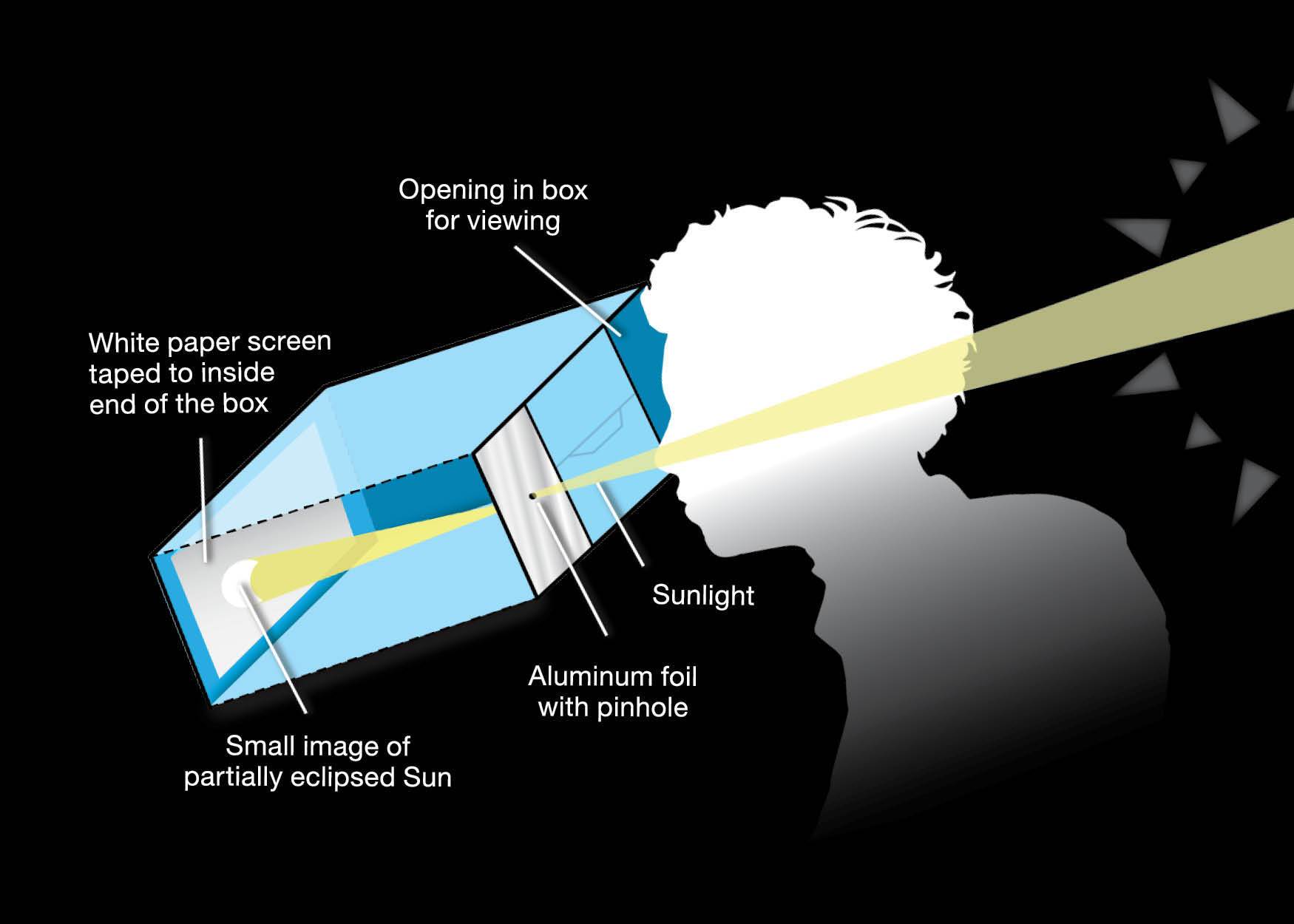.png?width=1640&height=924&name=Don%E2%80%99t%20Miss%20Out%20on%20the%20Solar%20Eclipse!%20(1).png)
The total solar eclipse is today! Don't miss the science happening right outside your window. Many states across the country will be able to see the total or partial solar eclipse. It will be years before you and your students can view one again, so step outside! Make sure you're prepared with these safety tips.
A solar eclipse occurs when the Moon passes between the Sun and Earth in the correct alignment to block the Sun from Earth fully or partially, depending on your location. Though only some states will see the eclipse in totality, the rest of the country will be able to experience the partial eclipse! This year, the total solar eclipse will start in Texas and end in Maine. Americans will be able to see the solar eclipse from all over. View the map below to see how much of the eclipse you will see in your area!
 (Image from NASA)
(Image from NASA)
Safety Tips
Looking toward the sun doesn't come without hazards. If you plan on viewing the eclipse, you'll want to make sure you take a few safety precautions for the eclipse today.
-
-
- Though rare and exciting, you're going to want to remember your safety glasses for viewing the partial eclipse or for viewing the eclipse before or after totality. The sun can very seriously damage eyes that don't have ISO-approved glasses on.
-
- Do not use eclipse glasses on anything besides your eyes such as cameras, telescopes, and binoculars.
-
- You may consider skin protection when being exposed to direct sunlight for an extended period of time.
-
- You can view the eclipse without glasses when it reaches totality.
-
- Consider using a colander if you don't have a pinhole projector.
-
Need a quick and safe way for your students to view the eclipse? Continue reading to learn how to make your own eclipse projector today with items found around your classroom.

(Image from NASA)
How to Make a Pinhole Projector
A pinhole projector is a safe option to help you and your students view the eclipse without looking directly at it. Using items found around your classroom, this projects only takes a few minutes and will help you experience this rare moment even better.
What You'll Need
-
-
- A box (such as a cereal box or shoe box)
- Piece of white printer paper
- Pushpin
- Aluminum foil
- Scissors
- tape
- Pencil
-
What You'll Do
- Tape one end of your box closed.
- Trace the closed end of the box onto the white sheet of paper using your pencil.
- Cut out the shape on the paper and place inside the box, flat on one end of the box.
- On the other side of the box, cut out two square holes, one on the left and one of the right side.
- Tape the open edges shut if needed.
- Cover one of the open squares with aluminum foil and attach with tape.
- Create one hole into the aluminum foil using the pushpin.
- Look into the empty hole toward the white paper and watch the projection of the eclipse!
Want to learn more about the sun and the moon? Mobile Ed has got you! The SkyDome Planetarium is our famous portable planetarium that allows students to experience the sun, moon, stars and planets right inside their school! The SkyDome is one of the most immersive ways to teach students about space. With high-quality animations and real-time visuals, this program will give students K-8 an up-close tour of the universe. This program is available all year round for schools, libraries, and community centers. Our curriculum aligns with the Next Generation Science Standards.
Contact us to learn more about the SkyDome Planetarium.






